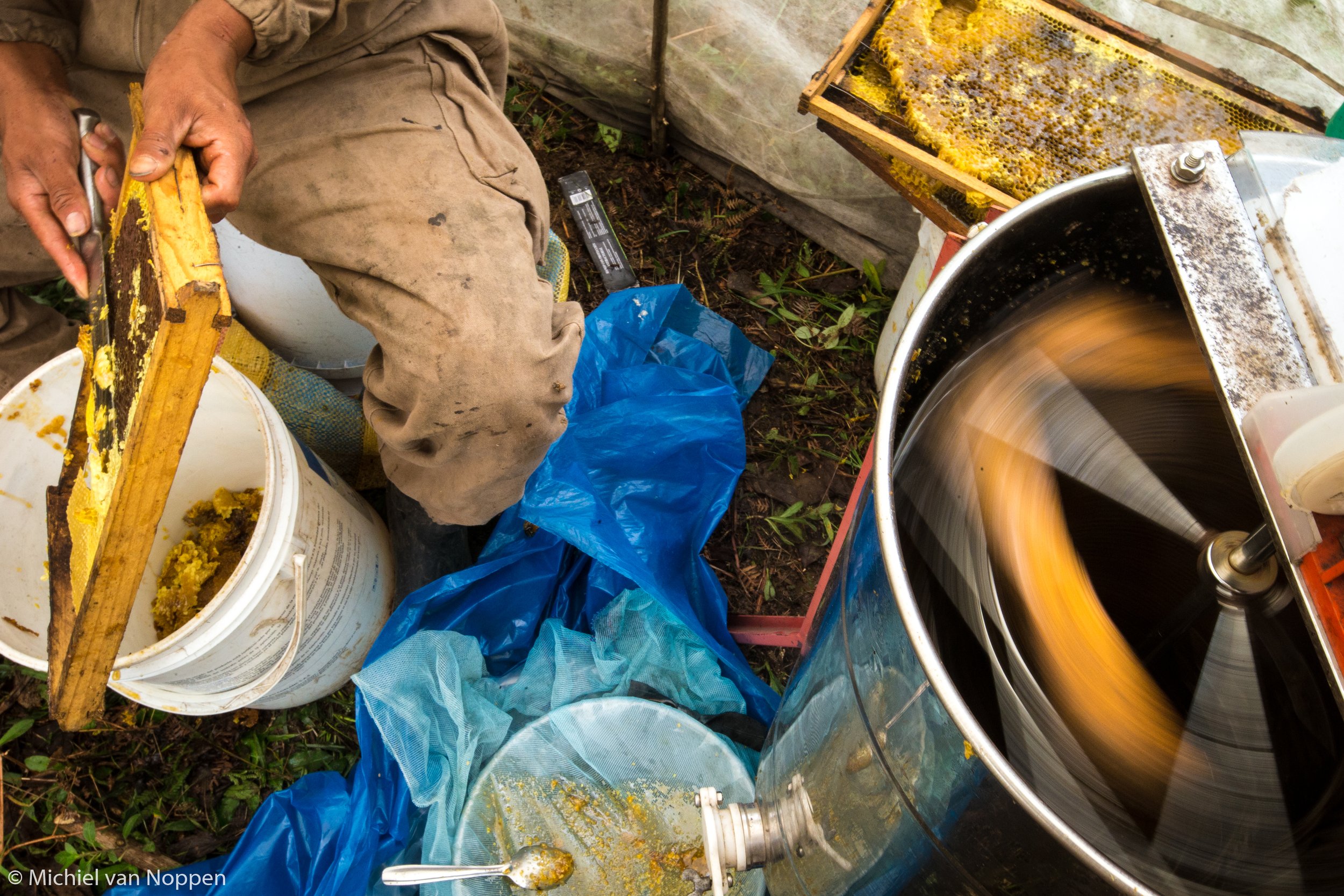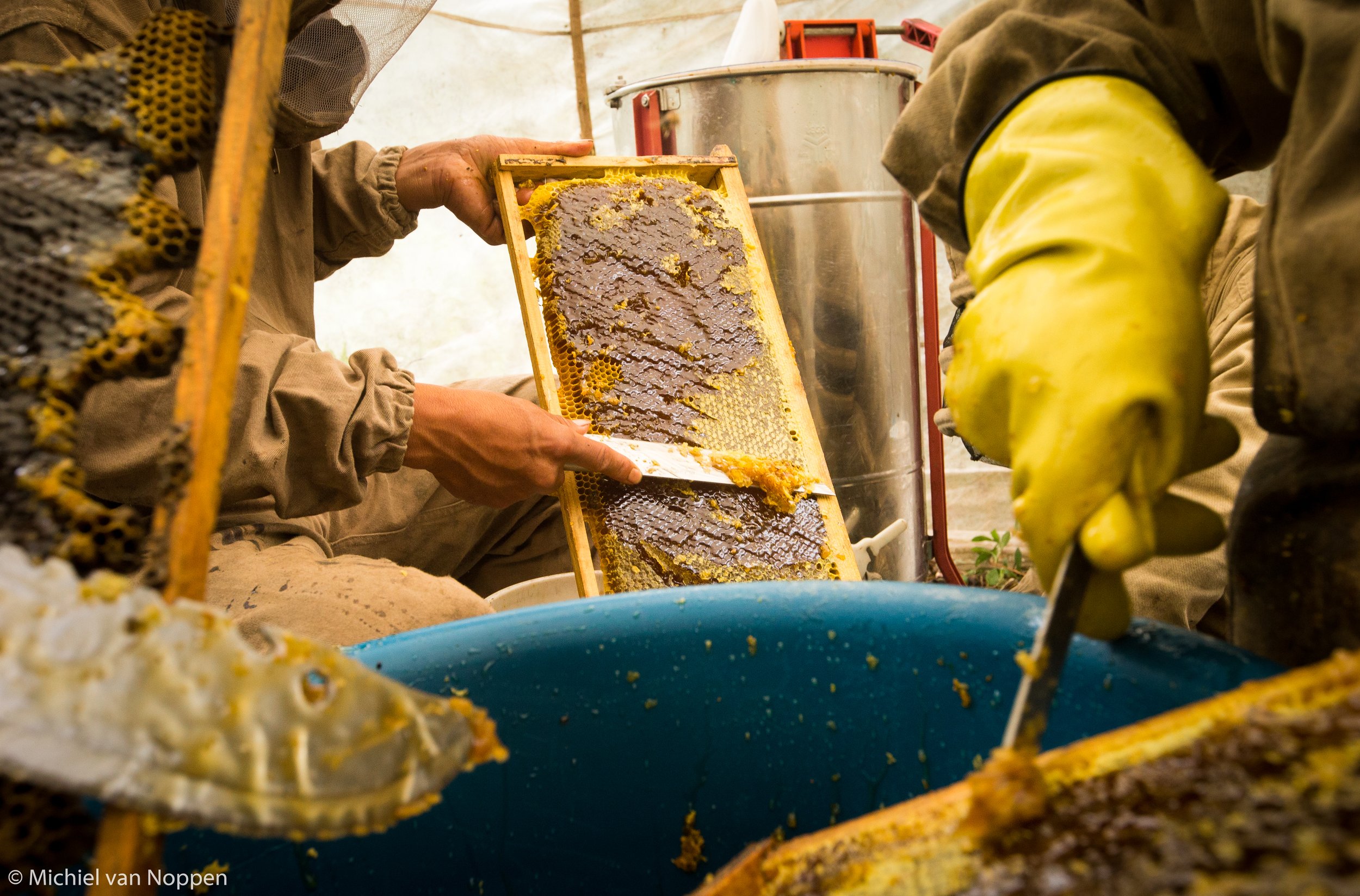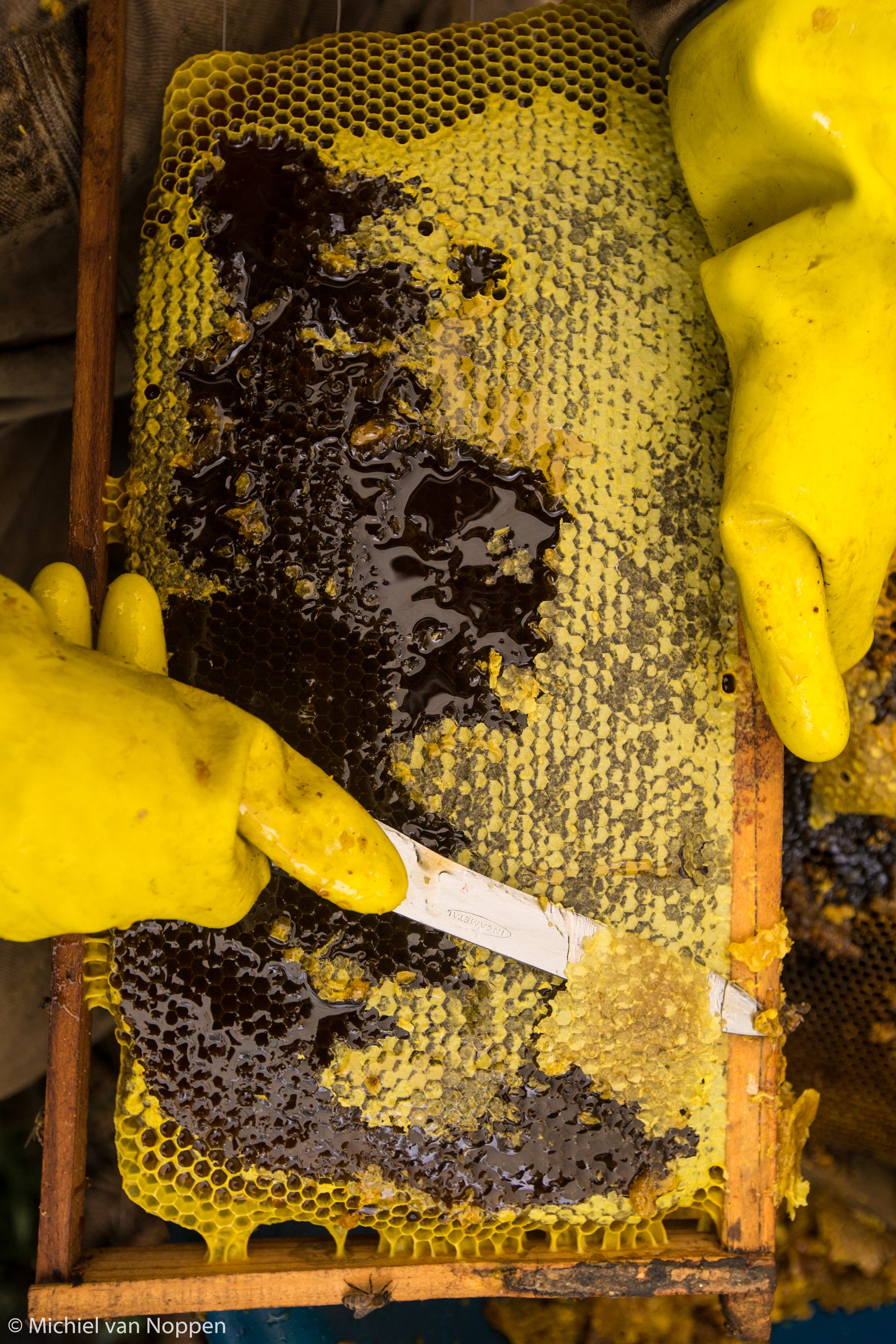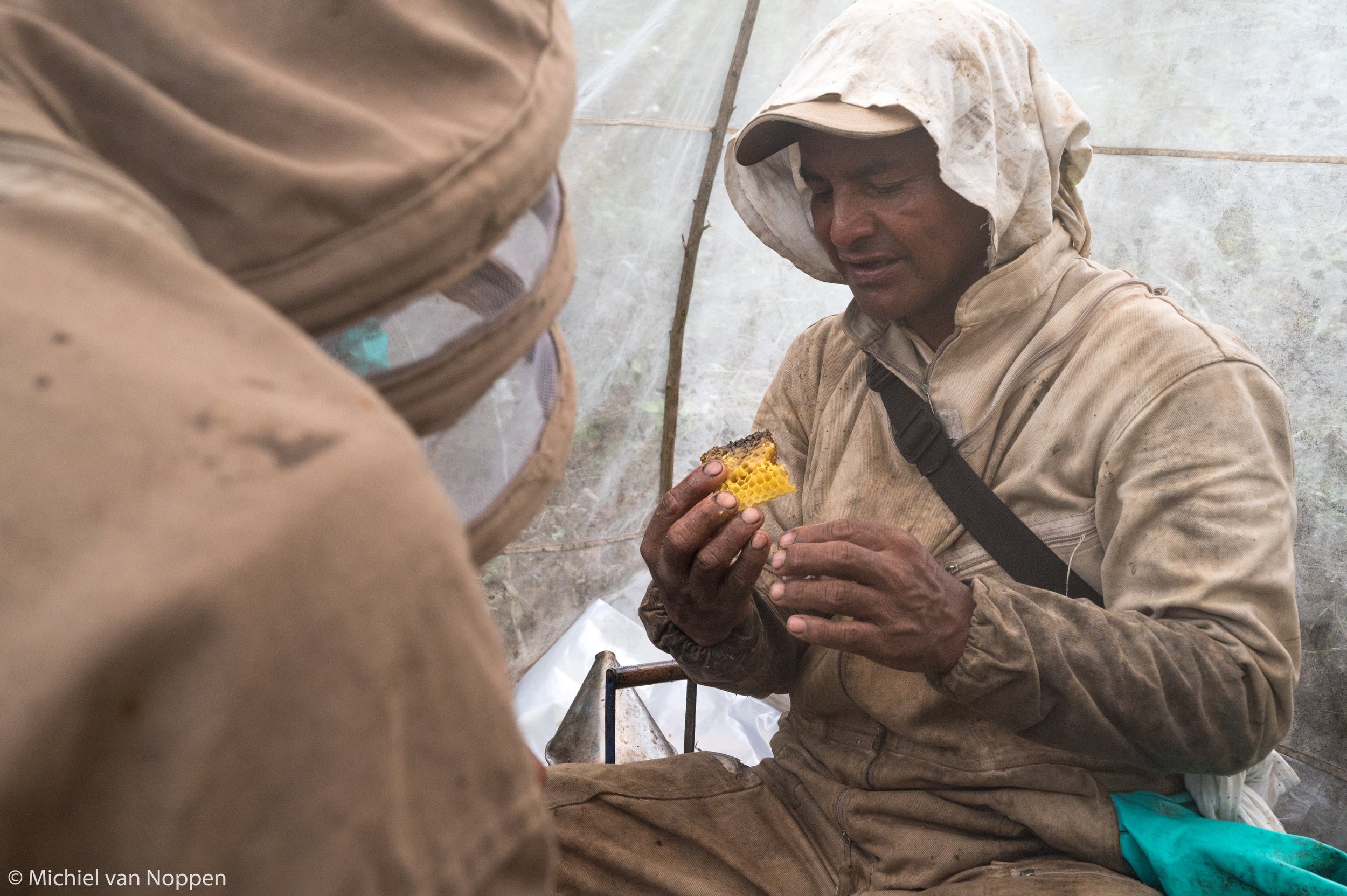Once a year, people from the community of El Rosario in the province of Huila, Colombia go to great lengths to collect honey from the notorious “killer bee”.
In the ’50s, Dr. Warwick Estevam Kerr was asked by the government of Brazil to introduce a type of bee to replace the badly performing European honey bees. Dr. Warwick Estevam Kerr brought over some African honey bees Apis mellifera scutellate, that would be more productive in a tropical climate. Fortunate for the bees, and less unfortunate for Dr. Warwick Estevam Kerr, the story goes that 26 bees escaped and went on to conquer everything between 34° latitude North and 32° latitude South.
These African honey bees sometimes referred to as “killer bees” are, in comparison to other species, far more aggressive and tend to swarm. They also seem to attack larger groups when threatened. It is thought that this behavior originated due to the hostile environment in which the bees thrived in Africa. They were being attacked on different fronts, by bee-eater birds, anteaters, ants, and of course the famous African honey badger. And maybe, more importantly, the notorious Homo sapiens. Being a defensive swarming species gave the African honey bee its edge over its badly performing European cousin. Making it quite a task to harvest this “liquid gold”.
Early in the morning, before the first sun rays, the trek to collect raw honey begins. Before descending into an uninhabited valley where the bees reside, all the goods have to be carried over the mountain ridge, mainly by horse.
Arrived at the site, first things first, the bee suits are being put on to keep the killers out. Furthermore, a smoker is being prepared using dried corncobs and a working station is being set up to extract the collected honey on the spot.
Once the bees are showered in smoke, quite literally, it’s time to rumble. A team of three works the bee yard (a collection of hives). A couple of meters down the valley, another group of three is working on the extraction of the honey.
Ever is expecting a slot. Only the bottom part of the slot contains honey.




Once the slots are taken out of the hive, they are brought to the tent to be processed. First, the wax cap of the comb (a grouping of 6-sided cells built from beeswax that is used to store food) is being removed by a knife. After this tedious process, (with a spontaneous snack of honey in between) the slots are put into a centrifuge type machine to be spun around to separate the honey from the combs.
After a full day of goldon honey extraction, one of the guys tries to take a quick nap, while is trying to gas the tent some more to keep the bees quiet.
Once all the buckets are filled up with honey, they are hauled up the mountain. Further up in the forest, the group makes small fires, in what sometimes felt like a sauna gone wrong. The fires create a barrier of smoke, leaving the bees behind once entering. Luckily, this area mainly consists of cloud forests, making bushfires nearly impossible. The horses are pulled into the smoke curtain to be saddled up with the freshly collected honey.
Portret of Hector Males. Don Males is being showered in some well deserved corncob-smoke to undo him of the hundreds of little killers.
Fresh “raw honey”.












